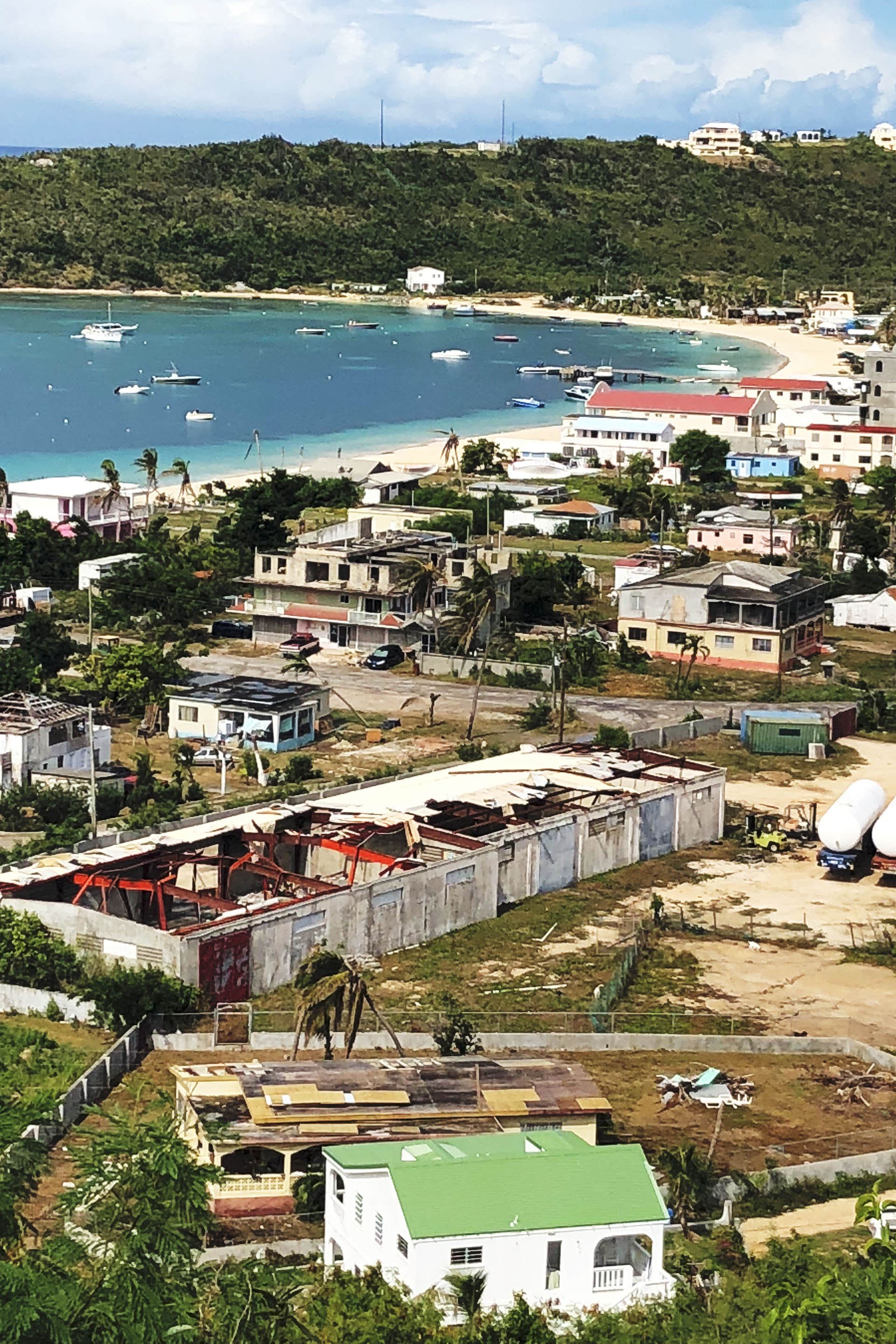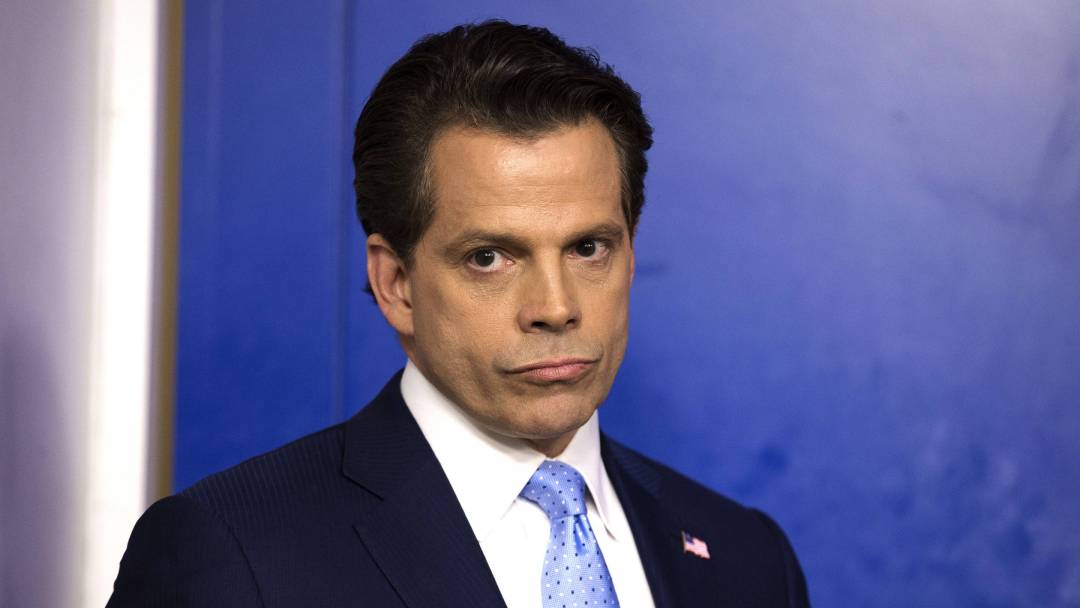
In the Battle Against Climate Change, the Caribbean Might Have the Most to Lose
This hurricane season, we're reminded how vulnerable islands are to the ravages of climate change
With us officially being on the brink of hurricane season once again, we’re forced to remember that less than a year ago in September, Hurricane Irma—with its 185-mph sustained winds—rammed into the Caribbean, disrupting communities that remain in infrastructure limbo until this day. Forty-eight hours before the storm landed, the 15,000 anxious residents of Anguilla, a serpentine island 230 miles east of Puerto Rico that seemed to have escaped much of the resulting disaster coverage, watched as Irma was upgraded to a Category 5 hurricane. This “oh shit” designation is given only to the most powerful storms. (For context, Hurricane Sandy was a Category 3 storm when it hit New York, Hurricane Harvey a Category 4.) Its ferocity was not a surprise to climatologists who’ve been warning that there was too much moisture in the air due to the increased sea temperatures caused by climate change. And moisture operates like steroids for hurricanes, they love the stuff.
The island’s small size and strong communal ties prevented the chaos caused by the storm from spilling over into mass unrest, which contrasted with the nearby island of St. Maarten, which has a population twice that of Anguilla. The island was hit with such a crazy force that it panicked the residents. Riots broke out, and the French and Dutch governments were forced to deploy troops to quell the unrest.
For climate scientists in the region, the storm represented a precursor to a larger, more existential problem facing island nations around the world: Their economies, already vulnerable due to their dependence on foreign capital, are about to fall off a climate-induced cliff unless they can drastically change. But the situation is complicated. Their fate is ultimately not theirs to dictate.
Dr. Adelle Thomas is the director of the Climate Change Initiative at the University of the Bahamas. Her work focuses on stressors, such as climate change, that are irreparably disrupting life on small island nations. “Very few people are actually tracking how these storms affect the longterm viability of these small nations,” she tells me. “Irma devastated the Bahamas. Six islands in the southern part [of the archipelago] had to be evacuated. All of [the residents] were moved to the capital and not all of them have come back.”
Much of her research examines how the tourism industry is ignoring the possible long-term effects extreme weather events will have on their operating capacity. And how island governments have little choice but to allow these corporations to continue building on their coastlines.


[These island nations] have no mechanisms in place to deal with what is coming. They don’t even have the historical data showing annual sea-level rise.
But like the continued viability of burning fossil fuels, tourism is highly sensitive to the effects of climate change. If the heat rises even a slight degree or coral reefs die (as they already are at an alarming rate), tourists will go elsewhere—taking their money, and the island’s main source of income, with them. “[These island nations] have no mechanisms in place to deal with what is coming,” Dr. Thomas tells me. “They don’t even have the historical data showing annual sea-level rise. And these foreign industries won’t front the bill when they are forced to adapt. They will be alone.”
The problem is bidirectional: Island nations have to deal with the changing of the Earth’s climate while understanding that it cannot be cowed no matter how many policies they put into place or how often they shop locally. Islands (and other small nations) are at the mercy of global powers, both in the form of large corporations, which are the islands’ largest employers, and the pollution from larger powers that created this problem in the first place.
During the 21st meeting of the United Nations Framework Convention on Climate Change, the Alliance of Small Island Nations—an intergovernmental group that tries to hold larger nations accountable for damages from climate change—fought for and won the addition of a key stand-alone provision to the Paris Climate Agreement’s architecture. The provision calls for developed nations to provide funding or strategic support to help developing countries “avoid and manage increasingly intolerable risks, such as supporting alternative livelihoods (for example, switching from farming to services sectors), provision of climate-resilient social protection schemes, or assisting with voluntary migration.” Labelled as the “Loss & Damage” article, its deliberately vague definition points in the direction of the problem rather than directly describing it to keep the UNFCC from calcifying an evolving crisis.


When extreme events happen, people ask if climate change played a role. Quite often in the past it has been a politician who has answered that question, and it was completely independent of any scientific evidence.
The victory was secured, in part, due to advances in computing power that allowed for breakthroughs in climate attribution science—a method of measuring the percentage for which an extreme climate event resulted from “anthropogenic climate interference,” i.e. from us. Think of it as being able to see how a virus proliferating throughout a body actually got into the subject’s system: 20 percent from not washing their hands, 30 percent from breathing in toxins emitted from trucks, five percent from staying the night at that crusty apartment of the dude you met on Tinder. And then you can discern what would have changed about the virus, if only you had washed your hands.
“When extreme events happen, people ask if climate change played a role,” Friederike Otto, deputy director of the Environmental Change Institute at the University of Oxford, told Scientific American. “Quite often in the past it has been a politician who has answered that question, and it was completely independent of any scientific evidence.” Now, the models allow researchers to demonstrate what climate change actually means for the state of humanity. The same research was used to examine why Hurricane Harvey stalled over the Houston area, causing historic flooding. It wasn’t news that humans were changing the climate, but, as a study published in the Geophysical Research Letters journal showed, the extent of our influence was.
In seven hours, Irma took out everything we built over years. And the reality is, we can get another storm like [Irma] this year. So, what was all this work that we put [into recovery] for?
Americans do not have to look far to see what happens when a community builds itself around a single, volatile industry. The U.S confronts widespread political unrest, in part due to factory closures that have left communities scrambling to support themselves and looking for scapegoats. And like American factory workers, most Anguillans I talked to see their relationship with hotels as a mutually beneficial one. The hotels provide jobs and further income in the form of visiting tourists, while the locals have access to resources that wouldn’t be on the island otherwise. And to their credit, the shuttered resorts have kept staff on for two days out of the week. But “when you’re making as little as [local hospitality workers] do,” an employee from Carimar Beach Club—one of the smaller hotels that sheltered their workers during the storm and was open for the holiday season—told me as he was repairing a broken pipe, “two days doesn’t really do much.”
Researchers like Dr. Adelle Thomas, and government officials like Victor Banks, have suggested that islands start taking advantage of the voluminous source of abundant wealth that surrounds them: the ocean. The 200-mile economic-exclusion zone each island is provided could be a source of vast opportunity in the form of maritime commerce or the development of fisheries. But again, due to overfishing and the overuse of plastics by larger nations, the longterm viability of sea life is threatened. Others have suggested building wind farms at sea and selling the renewable energy to neighboring communities. However, this requires a massive influx of capital, more than a small tourism economy has to offer. And there is always the possibility that the next storm that rolls through could take out such a project, leaving the island indebted and scrambling.
Before I left Anguilla, I met with Daryl Thompson, the graphic designer who—along with his partner—kept his family safe during Irma. He told me the crisis his community must face isn’t lost on him. “The thought that we’ve built our way of life around an industry that is dependent on someone else’s mood or financial status. To think about the fact that someone can always travel elsewhere…It is hard to comprehend,” he said. “In seven hours, Irma took out everything we built over years. And the reality is, we can get another storm like [Irma] this year. So, what was all this work that we put [into recovery] for?”






